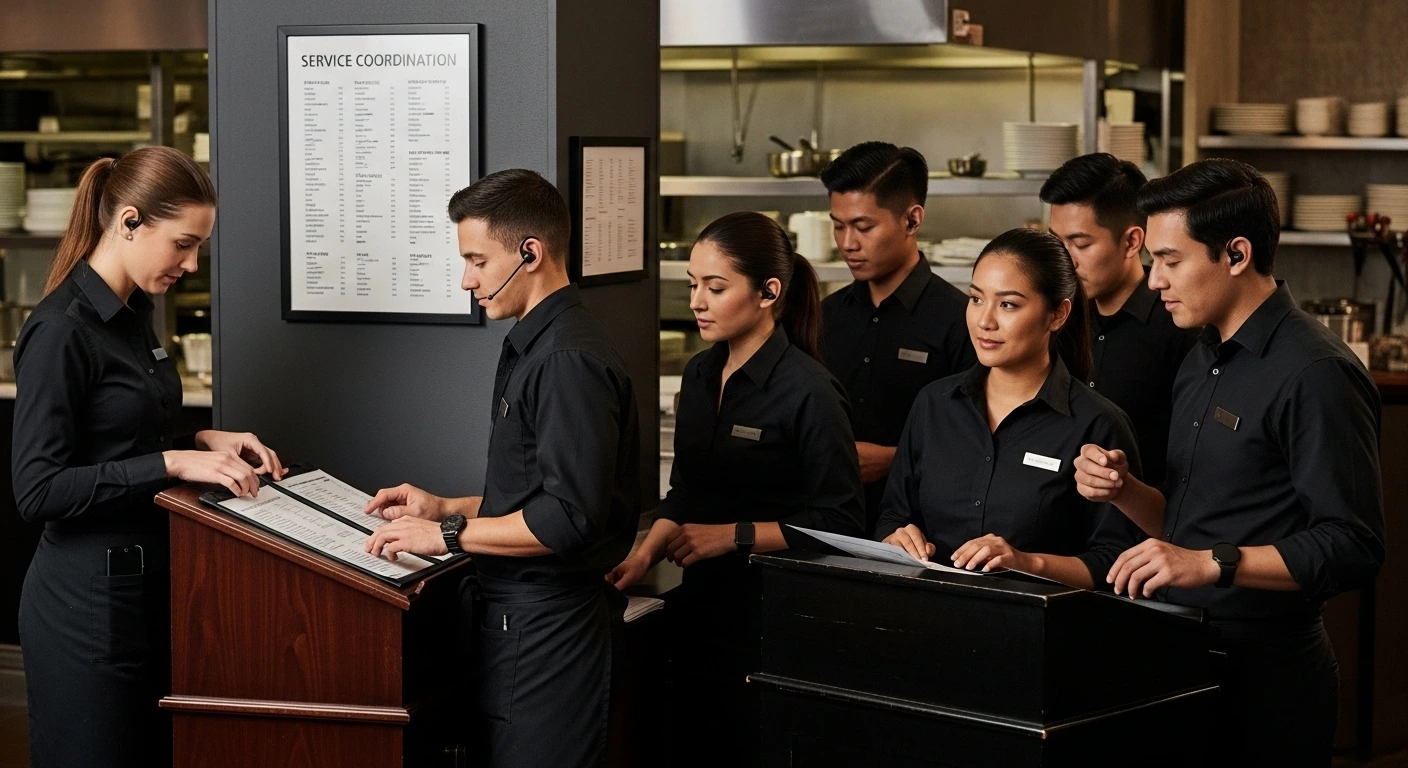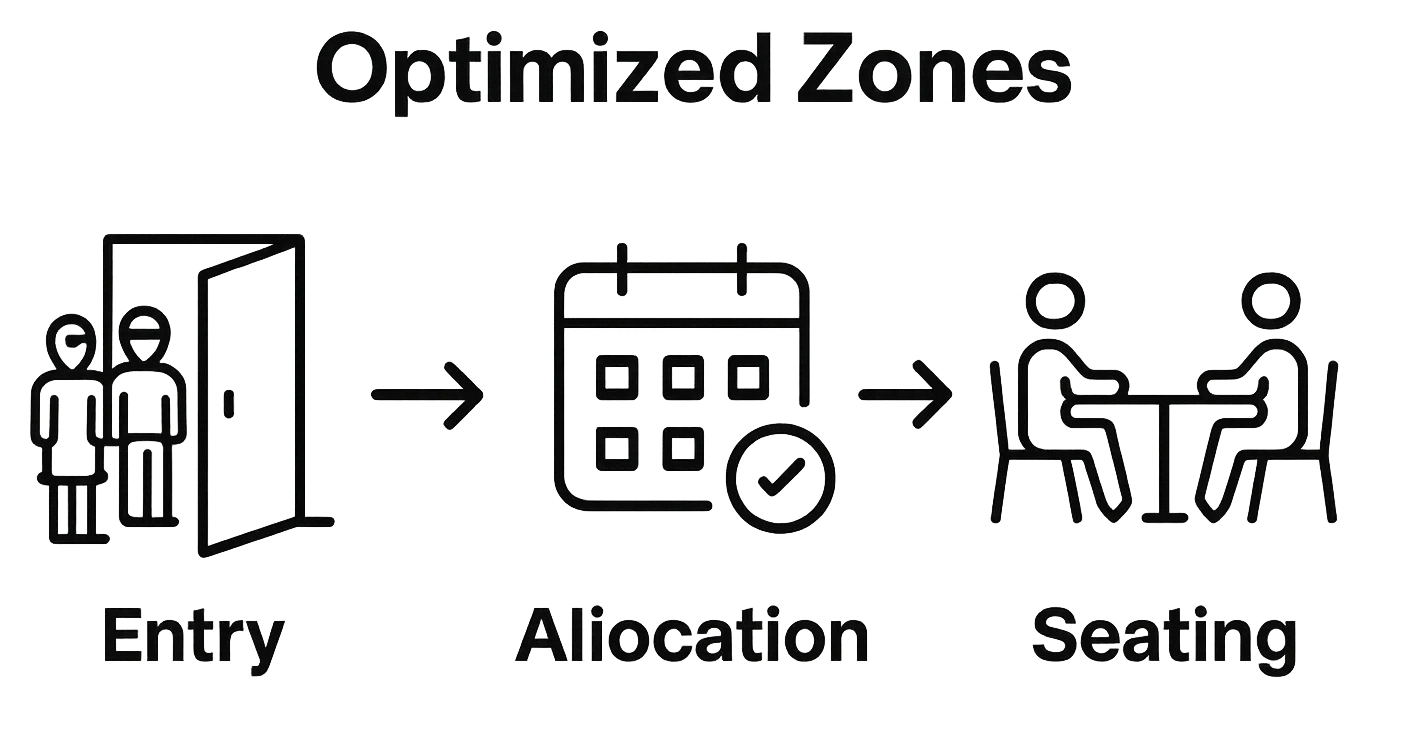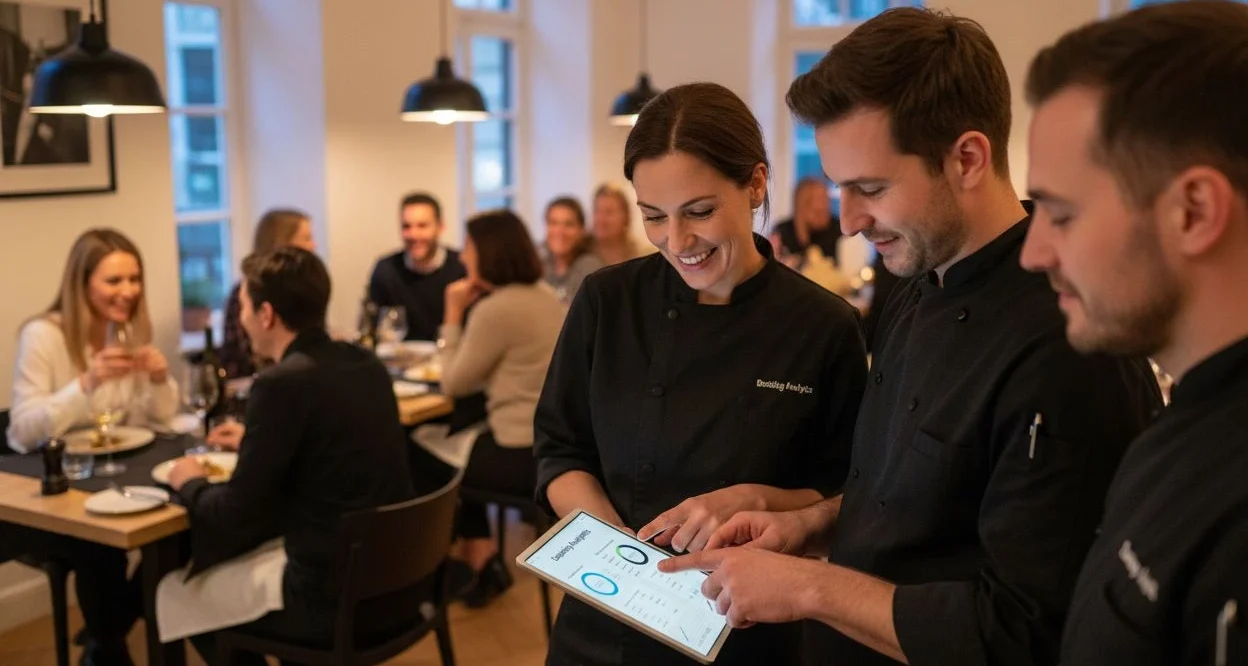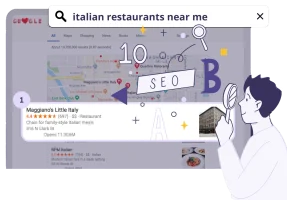Managing crowds in a busy restaurant can feel like a puzzle with shifting pieces. Some places find that average wait times can spike above 40 minutes during peak periods. Most expect tech or fancy menus to fix the chaos. In reality, the secret lies in how you understand and organise your space, staff, and systems—long before the first table is set.
Quick summary
Key point | Explanation |
|---|---|
Assess customer flow meticulously | Map the layout and observe guest movement to identify bottlenecks and enhance operational efficiency. |
Identify peak times using data | Gather historical data to understand dining patterns and peak hours for proactive crowd management. |
Develop a flexible seating plan | Create an adaptable seating arrangement prioritising comfort and efficiency to improve guest experience. |
Implement a robust reservation system | Use an efficient reservation platform with real-time tracking to control dining room dynamics effectively. |
Train staff for better coordination | Establish comprehensive training to ensure team efficiency during busy periods through communication and problem-solving skills. |
Step 1: Assess your current customer flow
Understanding your restaurant’s current customer flow is fundamental to developing effective crowd management strategies. This initial assessment provides critical insights into how guests move through your space, identify potential bottlenecks, and create opportunities for smoother operational experiences. To begin, map out your restaurant’s physical layout and observe guest movement patterns during peak hours. Walk through your restaurant during different service times to understand how customers enter, wait, get seated, order, dine, and exit. Note areas where congestion naturally occurs such as entrance points, bar spaces, payment counters, and walkways between tables. Capture detailed data through multiple observation methods. Consider using digital tracking tools or manual time tracking to measure key metrics like average wait times, table turnover rates, and transition periods between seating and ordering. Restaurant survey techniques can help you gather structured restaurant insights about customer experiences and potential friction points.
Quantitative measurement is crucial. Track metrics like:
Average customer arrival intervals
Time spent at bar or waiting areas
Seating and table turnover duration
Peak hour guest density

Qualitative observations matter equally. Pay attention to guest body language, staff interactions, and emotional signals indicating potential discomfort or frustration. Are guests clustering uncomfortably? Do servers seem overwhelmed during specific periods? These nuanced details reveal operational challenges that pure numbers might miss.
Step 2: Identify key peak times and patterns
Identifying your restaurant’s key peak times and customer patterns is crucial for developing targeted crowd management strategies. This step transforms raw data into actionable insights that will help you anticipate and manage customer flow more effectively. Start by collecting comprehensive historical data from your point of sale (POS) system, reservation platforms, and manual tracking. Look beyond simple transaction numbers to understand nuanced dining patterns. Analyze data across different dimensions like days of the week, seasonal variations, special events, and holiday periods. Pay close attention to hourly customer volumes, with particular focus on lunch, dinner, and weekend rush periods. Utilize digital tools and analytics to streamline your pattern identification. Peak dining hour strategies can help you leverage technology for more precise tracking. Modern restaurant management software can generate detailed reports showing exact customer arrival times, table occupancy rates, and average dining durations.
Key metrics to track include:
Average guest count per hour
Busiest days and times
Seasonal fluctuations in customer traffic
Correlation between events and dining volumes

Step 3: Develop a strategic seating plan
Developing a strategic seating plan transforms your restaurant’s operational efficiency and customer experience. This crucial step translates your previous customer flow analysis into a deliberate, intelligent spatial arrangement that maximizes comfort, service speed, and overall dining satisfaction. Begin by creating a detailed floor map that goes beyond simple table placement. Consider table sizes, spacing, proximity to kitchen and service areas, and potential guest preferences. Restaurant floor plan design strategies recommend creating flexible zones that can adapt to different party sizes and dining needs. Prioritize guest comfort and operational flow when designing your seating arrangement. Strategically position tables to minimize server walking distances while ensuring guests have adequate personal space. High-traffic areas like entrances, bar sections, and restroom pathways require special attention to prevent congestion and maintain smooth customer movement.
Step 4: Implement efficient reservation systems
Implementing an efficient reservation system is a game-changing strategy for modern restaurants seeking to optimize crowd management and enhance customer experiences. This step transforms how you control and predict customer flow, turning potential chaos into a streamlined operational approach. Choose a reservation system that offers comprehensive features beyond simple booking capabilities. Online reservation system basics highlight the importance of selecting a platform that integrates seamlessly with your existing restaurant management infrastructure. Look for systems that provide real-time analytics, automated confirmation messages, and flexible booking options across multiple channels including website, mobile apps, and third-party platforms. Design your reservation workflow to capture critical guest information that supports crowd management. Implement customizable booking forms that collect party size, dining preferences, special occasion details, and contact information. These data points enable more precise planning and personalized customer experiences.
Step 5: Train staff for effective service coordination
Training staff for effective service coordination is the cornerstone of seamless crowd management. This crucial step transforms individual employees into a unified team capable of handling complex dining scenarios with precision and grace. Develop a comprehensive training programme that goes beyond traditional onboarding. Strategies for creating outstanding restaurant staff emphasize the importance of continuous learning and scenario-based training. Create detailed documentation that outlines specific protocols for managing different crowd scenarios, including peak hours, unexpected large groups, and potential bottlenecks. Implement a multi-layered training approach that combines theoretical knowledge with practical skill development. Start with classroom-style sessions where staff learn about restaurant flow, communication protocols, and customer service standards. Follow these sessions with hands-on simulations that replicate real-world dining challenges. Practice scenarios should include managing wait times, redistributing guests across different dining areas, and handling unexpected disruptions with minimal guest inconvenience.

Key training focus areas include:
Clear communication protocols
Real-time problem-solving techniques
Understanding restaurant layout and flow
Coordinated team response strategies
Stress management during high-pressure situations
Ready to transform your restaurant’s crowd management
Many restaurant owners struggle with bottlenecks during peak hours, overwhelmed staff, and unpredictable customer flow. The article has outlined the importance of tracking guest movement, optimising table turnover, and embracing modern reservation tools for effective crowd control. If these challenges sound familiar and you are searching for a smarter way to manage bookings, seating, and guest expectations, you are not alone. Now is the time to move beyond manual processes and take advantage of powerful solutions designed exactly for your unique needs. Tableo’s advanced reservation management platform offers inbuilt crowd control features that allow you to handle all of the above effortlessly.
Frequently asked questions
The key steps in effective restaurant crowd management include assessing current customer flow, identifying peak times and patterns, developing a strategic seating plan, implementing efficient reservation systems, training staff for effective service coordination, and regularly monitoring and adjusting strategies.
To assess your restaurant’s current customer flow, map out the physical layout, observe guest movement during peak hours, and capture data on key metrics such as average wait times, table turnover rates, and customer density. Combining qualitative observations with quantitative data will provide a comprehensive understanding.
When choosing a reservation system, prioritise features such as automatic waitlist management, real-time table availability tracking, flexible time slot configurations, and customer preference and history tracking to enhance crowd management and improve operational efficiency.

Unlock the tips that will help you stand out from the crowd and get more bookings!

Learn how to save time, reduce stress and fill your restaurant while you sleep!









